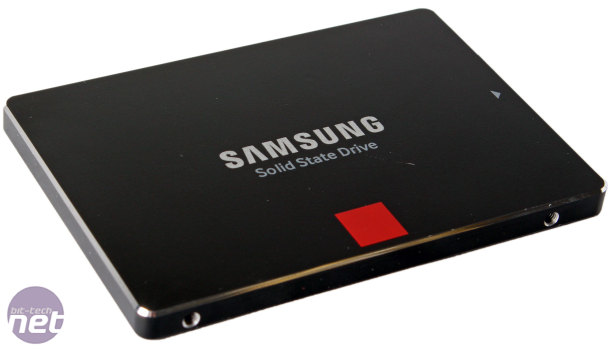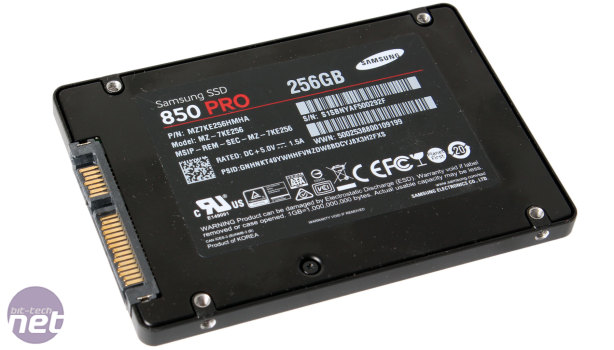
Samsung SSD 850 PRO 256GB Review
Manufacturer: SamsungUK price (as reviewed): Approx £145 (inc VAT)
US price (as reviewed): MSRP $199.99 (ex Tax)
Despite being introduced a couple of years ago now, Samsung's SSD 840 PRO continues to find itself at the top of performance benchmarks, with other manufacturers having had to play catch up in a number of areas since its introduction. Keen to keep ahead of the curve, Samsung is today launching the SSD 850 PRO, the direct replacement for the SSD 840 PRO. It comes in a single form factor only, namely 7mm tall 2.5-inch, and uses the existing SATA 6Gbps interface – there is as yet no word of any PCI-E interface drives nor any other form factors such as mSATA, M.2 or SATA Express. Availability for all capacities is now confirmed as July 21st and prices are a little lower than initially thought; $199.99 for the 256GB, which should work out to about £145 here once tax has been applied.
As before, the intended use of the SSD 850 PRO is client PCs rather than server ones, for example, but it's aimed more at workstation and other professional applications as opposed to your average home user or gamer, for which the SSD 840 EVO is more appropriate thanks to its especially low cost per gigabyte.
The big news surrounding the SSD 850 PRO is its use of a new type of NAND. Typically, the focus of lowering the cost of NAND and thus SSDs has been scaling down through process and die shrinks. This process carries with it issues to do with performance and endurance that manufacturers have had to deal with in their own ways. However, as we move beyond the 20nm class toward the 10nm class and below, this is becoming all the more difficult, as the space between individual cells shrinks to the point where electron interference and thus data errors and failures are more likely and also harder and more expensive to combat, which begins to negate the associated cost savings of a die shrink.
Samsung's answer to this is its new NAND, specifically 32 layer 3D V-NAND, which it claims is set to break through the density (and hence capacity) barriers that we're starting to reach with current 2D/planar NAND. Samsung has kept relatively quiet about the technical specifics of this NAND, but we're hoping to be able to share more details with you in a separate piece shortly.
What we do know is that the SSD 850 PRO is actually using the second generation of Samsung's 3D V-NAND. The first to be developed was a 24 layer structure, though as yet it hasn't made it to market in a consumer SSD. 3D V-NAND is based on Samsung's Charged Trap Flash (CTF) architecture as opposed to a traditional floating gate design, the main difference being that charge is stored in a layer of insulation rather than a conductor.
The new architecture enables higher density; Samsung claims that the new 3D V-NAND offers up to two times the density of traditional 20nm planar NAND, and that 512Gb and even 1Tb are possible in the future. Currently, the highest available capacity in a single 2D NAND die is 128Gb (16GB), which both Samsung and IMFT produce, though 64Gb dies are used in the existing SSD 840 PRO. The individual NAND die size on the SSD 850 PRO has been confirmed as 86Gb (10.75GB), though we were unable to open our sample up to confirm the package arrangement due to the use of tamper-resistant pentalobe screws; we'll update this article once we have pictures of the insides. However, as you can see in the spec table over the page, Samsung has now been able to introduce a 1TB drive to the PRO line-up thanks to the increased density. Even better is the fact that despite the overall density increase, 3D V-NAND is also faster, more efficient and longer lasting than its 2D counterparts, making it an all round win-win.
Specifications
Interface: SATA 6GbpsNominal capacity: 256GB
Formatted capacity: 238.47GB
Controller: Samsung MEX
Cache: 512MB Samsung LPDDR2
Memory type/amount: Samsung 32 layer 3D V-NAND
Endurance rating: 150TB total host writes
Warranty: Ten years

MSI MPG Velox 100R Chassis Review
October 14 2021 | 15:04










Want to comment? Please log in.